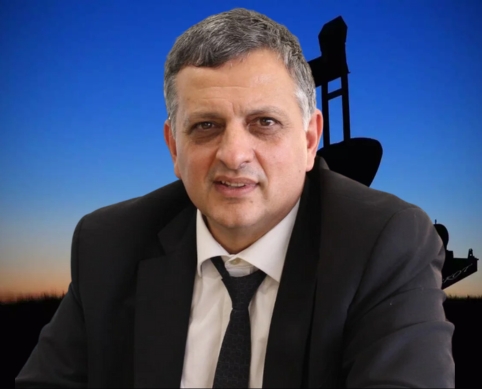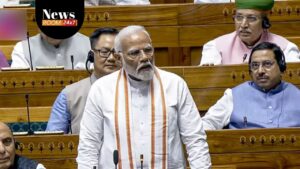Argentina Pursues LNG Megadeal: YPF CEO’s Ambitious Strategy to Ensure India’s Energy Future

In a bold effort to establish Argentina’s position in the global energy market, YPF, the country’s leading energy firm, is targeting India for a long-term liquefied natural gas (LNG) agreement. Recently, YPF officials, including CEO Horacio Marin, visited India to engage with energy companies like Petronet LNG Ltd., setting the stage for Argentina’s future as a major LNG exporter. In an exclusive conversation with Financial Express Online, Marin highlighted that India is viewed as a crucial market for Argentina’s ambitious strategy to develop its Vaca Muerta shale gas reserves.
Vaca Muerta and the Argentina LNG Project
YPF, alongside its strategic partner Petronas, is leading a significant LNG project poised to be one of Argentina’s most important energy endeavors in decades. Situated 600 km from the Vaca Muerta shale formation on Argentina’s east coast, the project is expected to commence exports from floating liquefaction units by 2029, with an onshore terminal projected to follow by 2031. The project aims to produce 30 million tons of LNG annually, positioning it among the largest in the world.
Marin has been open about the necessity for financial support to make the project a reality, stating, “This project requires project financing. You cannot self-finance because the amount of investment needed for the LNG plant is enormous for any company.” The potential agreements with global buyers, particularly India, are crucial for securing the billions of dollars required to fund the initiative.
The Strategic Importance of India
For YPF, India represents more than just a potential market; it is a vital element of Argentina’s strategy to diversify its energy sources. Marin’s visit aimed to initiate negotiations and foster long-term partnerships with Indian energy companies and government officials. In the coming ten years, Marin said, “India will be the engine of the world.” “I know you don’t have the gas reserves, but we think your nation needs to guarantee a steady supply of gas to support your development plans.”
India’s increasing energy demand and the need for diversified sources make it an appealing market for YPF’s LNG exports. Marin highlighted the strategic alignment between Argentina and India, pointing out the established diplomatic relations between the two countries. He said, “Argentina and India have a strong relationship.” The goal of this project is to build a long-term collaboration, not merely satisfy tiny buyers.
Overcoming Argentina’s Past Challenges
Argentina’s ambitions in the LNG sector have encountered delays and obstacles previously, but Marin is optimistic about the current economic and political environment being significantly more conducive. “Five years ago, Vaca Muerta was just starting out,” he explained. “At that time, we lacked the legal framework, infrastructure, and financial stability necessary to support such a large-scale project.”
Recent legislative reforms in Argentina, including the introduction of the “Regime for Large Investment” (RIGI) law, have created the regulatory stability essential for attracting foreign investment. “This law not only makes LNG competitive but also provides a solid regulatory framework. It guarantees stability for investors and includes mechanisms such as international arbitration, which were not previously available,” Marin stated.
He further noted that YPF’s current efforts are directed toward securing buyers to facilitate financing. “Now that it’s competitive, we need to find the buyers. Once we have the buyers, we can approach the banks,” he highlighted, emphasizing the crucial role potential contracts with Indian companies play in advancing the project.
India’s Role in the Global LNG Market
India, already one of the world’s largest LNG importers, is anticipated to see its demand surge as it continues to industrialize and urbanize. Petronet LNG Ltd., the largest buyer of LNG in India, has been a significant participant in discussions with YPF; however, Marin made it clear that negotiations are still in their infancy. “The purpose of my visit is to initiate negotiations,” he said. “The important thing is to initiate the conversation and show that our project is highly competitive, even though we have no idea how things will turn out.”
Marin suggested that Indian companies may become more engaged in the project as it develops, but he stressed that YPF’s primary objective remains to secure off-take agreements for the LNG. “”Although we welcome investments from Indian businesses, completing off-take agreements is our top goal. If the volume is substantial enough, we can consider increasing Indian involvement,” he explained.
A Long-Term Vision for Global Energy
The magnitude of YPF’s LNG project has the potential to revolutionize Argentina’s energy landscape. If all goes as planned, Argentina could emerge as the world’s fifth-largest LNG exporter by the early 2030s. Marin expressed optimism for the future despite acknowledging that the nation has taken some time to reach this point. Despite the delay, we are now prepared. We possess the resources, the legislation, and the financial instruments necessary to advance,” he stated.
Despite past challenges, Marin believes that Argentina’s LNG initiative will be essential in addressing the rising global energy demands. “India will require gas, and Argentina can serve as one of its key suppliers. Energy is vital for alleviating poverty and fostering economic growth,” he remarked.
Looking Forward: A Critical Year Ahead
The upcoming year will be crucial for YPF and its LNG objectives. Marin revealed that the final investment decision (FID) for the initial phase of the project, which includes the floating LNG units, is anticipated by the end of 2025, with plans to commence gas deliveries by 2029. The onshore LNG terminal is scheduled to be operational by 2031, solidifying Argentina’s position in the global energy arena.
In the interim, Marin’s focus remains on securing essential off-take agreements that will enable YPF to proceed. “Over the next 20 years, our goal is to sell gas from Argentina,” he stated. “We think India will be very important in that future.









